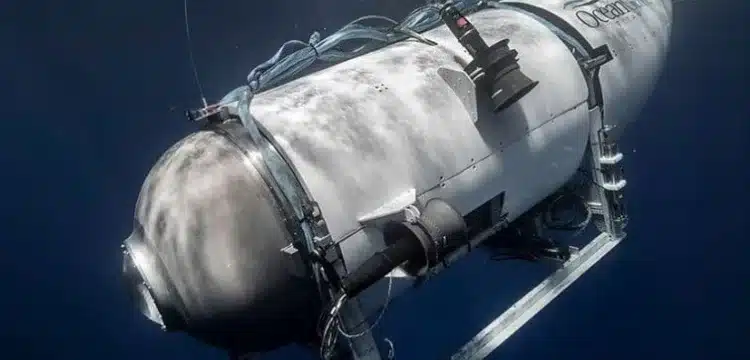[vc_row][vc_column][vc_column_text dp_text_size=”size-4″]A “debris field” was spotted by an underwater robot looking near the Titanic site for a lost submersible with five people on board, rescuers said Thursday.
The development came as rescuers insisted that the global search for the craft was still focused on finding the crew alive, despite fears that the vessel’s oxygen supply had depleted.
“Experts within the unified command are evaluating the information,” the US Coast Guard tweeted.
According to the coast Guard, the debris field was discovered “within the search area by a ROV (Remotely Operated Vehicle) near the Titanic.”
It provided no additional information but stated that a press conference would be held in Boston at 3:00 p.m. (1900 GMT).
Two more robots were launched Thursday in the search for the Titan sub, which has gone missing somewhere in the North Atlantic between the ocean’s surface and more than two miles (almost four kilometres) below.
Rescuers believed that the passengers, who included fee-paying visitors, may have run out of oxygen in the early hours of Thursday based on the sub’s capacity to hold up to 96 hours of emergency air.
However, once that potential deadline passed, US Coast Guard Rear Admiral John Mauger stated that rescuers were “fully committed” to search and rescue operations.
“The will to live of people must also be considered.” “We’ll keep looking,” he said on NBC’s Today show.
In the last day, a surge of assets and experts has joined the operation, and sonar has detected strange underwater noises.
‘The main hope’
The response, which includes US and Canadian military planes, coast guard ships, and teleguided robots, is concentrating its efforts around the sounds.
The noises, which were heard Tuesday and Wednesday and were described as “banging,” boosted hopes that the passengers were still alive, however specialists were unable to determine their origins.
Also Read: All Passengers in missing submarine died: OceanGate
The French research ship Atalante deployed an unmanned robot capable of searching at depths of up to 6,000 metres (almost 20,000 feet) below water on Thursday, according to a tweet from the US Coast Guard.
The Victor 6000 has been dubbed “the main hope” for an underwater rescue by experts.
Horizon Arctic, a Canadian ship, also released a robot that had already reached the ocean floor and begun its hunt.
Mauger also stated that vessels carrying medical personnel and a decompression chamber are on their way to the area.
The Titan began its descent at 8:00 a.m. on Sunday and was scheduled to emerge seven hours later.
However, less than two hours into its journey to witness the Titanic, the drone lost contact with its mothership.
It was transporting British billionaire Hamish Harding, as well as entrepreneur Shahzada Dawood and his son Suleman, who are dual Pakistani-British citizens. A seat on the sub costs $250,000 with OceanGate Expeditions.
Stockton Rush, the CEO of OceanGate, is also on board, as is French submarine operator Paul-Henri Nargeolet, dubbed “Mr Titanic” for his repeated dives at the site.
Ships and planes scoured 10,000 square miles (about 20,000 square km) of surface water for the vessel, which is roughly the size of the US state of Massachusetts.
The Titanic’s watery tomb is 400 miles off the coast of Newfoundland, Canada, and more than two miles below the North Atlantic’s surface.
Experts suggest that even if the submersible is discovered, lifting it from deep water will be difficult.
The Navy has dispatched a specialised winch system for lifting huge things from great depths, as well as other equipment and troops, while the Pentagon has despatched three C-130s and three C-17s.
The Titanic collided with an iceberg and sank in 1912 on its maiden trip from England to New York, carrying 2,224 passengers and crew. Over 1500 individuals were killed.
‘It’s difficult to imagine.’
It was discovered in 1985 and continues to captivate nautical specialists and underwater tourists.
The pressure at that depth, measured in atmospheres, is 400 times greater than the pressure at sea level.
Tom Zaller saw the Titanic in a submersible similar to the missing one 23 years ago.
“You’re sending a very small vessel two and a half miles down, which is incredibly complicated and technical,” he explained. “It’s just this very simple, seemingly unsophisticated sphere.”
Zaller has known Nargeolet for decades and was in contact with Rush before the tour began on Sunday.
David Lochridge, OceanGate Expeditions’ former head of marine operations, claimed in a lawsuit in 2018 that he was fired after citing concerns about the company’s “experimental and untested design” of Titan.
[/vc_column_text][/vc_column][/vc_row]











